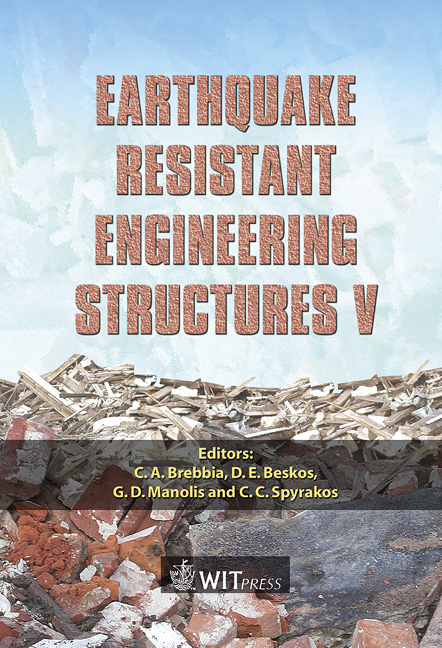Elastic And Inelastic Spectra For Greek Earthquakes, Based On A Representative Set Of Records
Price
Free (open access)
Transaction
Volume
81
Pages
11
Published
2005
Size
609 kb
Paper DOI
10.2495/ERES050671
Copyright
WIT Press
Author(s)
C. Athanassiadou, A. Kappos, C. Karakostas, N. Klimis, V. Lekidis, V. Margaris & N. Theodulidis
Abstract
Elastic and inelastic spectra are derived, based on a set of records representative of Greek earthquakes. For the selection of the dataset, criteria of magnitude, distance and PGA are used. Recently developed techniques are used to correct and filter the noise and other errors in the records. Based on available geotechnical information, a classification of the dataset into three soil categories, compatible to the 2004 Eurocode 8 (EC8) provisions, is made. After appropriate scaling, mean elastic and inelastic spectra are computed both irrespective of, as well as for, each soil condition, and comparisons with the EC8 design spectra are made. Keywords: elastic spectra, inelastic spectra, strong motion accelerograms, filtering, soil classification, Eurocode 8. 1 Introduction Elastic and inelastic spectra, either of pseudoacceleration or displacement, play a key role in modern Earthquake Engineering practice. Especially, displacement spectra form the basis of the recently developed displacement-based design and pushover analysis procedures and their adoption by seismic codes is currently underway. For the evaluation of such spectra, careful selection and proper processing of representative strong motion records are of paramount importance.
Keywords
elastic spectra, inelastic spectra, strong motion accelerograms, filtering, soil classification, Eurocode 8.





